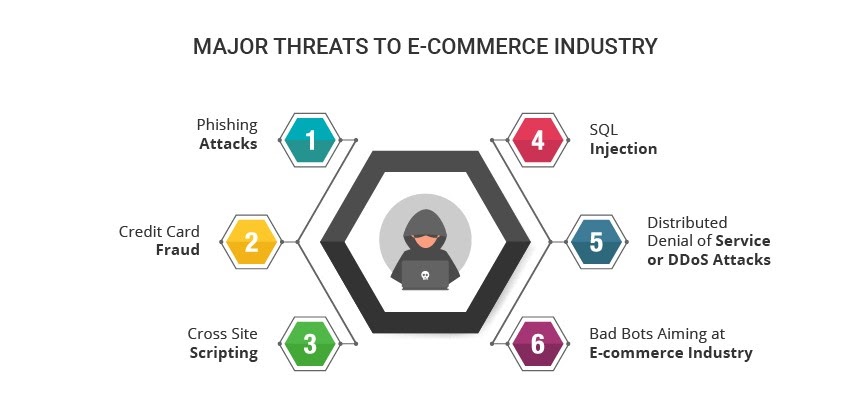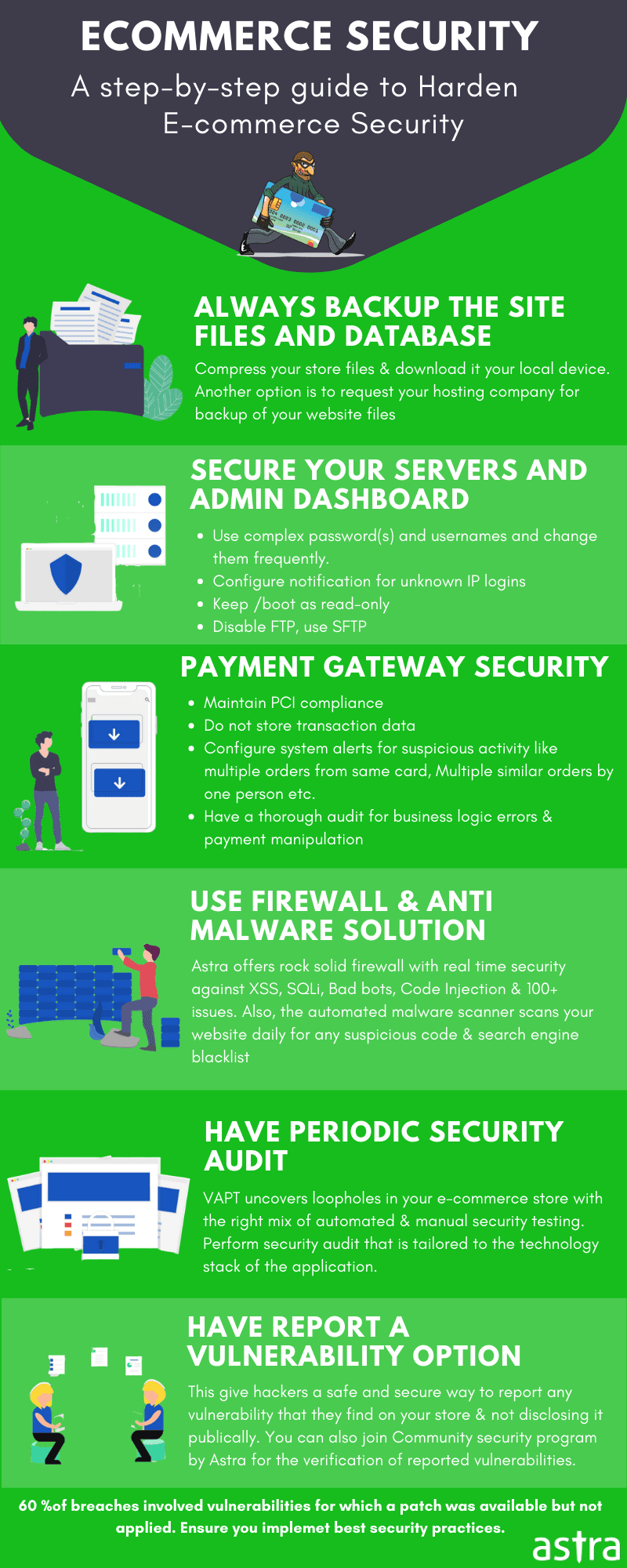E-commerce websites today are responsible for more than 40% of the entire sales in the market. It is thus obvious to see that this industry has become prey for many attackers and hackers. The e-commerce threats have become so common that by the time you will finish reading this article there will be one case registered against e-Commerce cybercrime. With so much money in this industry; hackers try their best to attack your website. They use all the possible measures to steal and exploit people’s data and hurt the brand’s reputation and business severely.

Money Lost due to e-commerce frauds
In 2017, E-commerce websites made a profit of over 107 billion dollars. But out of those 65 million dollars were lost in E-commerce frauds.
There are many store owners still who don’t take hackers seriously. Many others find it very vexing to implement proper security in place that doesn’t hinder the customer experience at the same time provide notch security.
In an online interface, where the interaction between the seller and buyer is almost non-existent, a security seal paints a good picture of your website. I might even be the needed push for a successful transaction to take place. Customers need assurance that they are swiping on an authentic website. Securing your store with a security solution & following compliance guidelines relevant to the business (like BBB, PCI etc.) helps to increase user trust.
So, it is very important for the owners to provide proper security against all types of e-commerce threats.
As the e-commerce website owner, it is your responsibility to be one step ahead of the attacker. We are here to provide you with all the basic knowledge of the possible e-commerce threats that e-commerce faces today. Additionally, we will also provide the safety measures that you can easily apply to guard your store better.
Potential e-commerce Threats:
Hackers don’t take a day off, so it is important that all the e-commerce merchants are well aware and are on a constant red alert for any frauds. The website owners need to constantly monitor their websites for malicious codes and malware.
Here are the 6 most common e-commerce threats to watch-out:
1. Spam:

The most common threat to e-commerce websites is spamming. These are unwanted comments or emails to your website. These comments are inserted to leave infected links on your website.
Spams are those silent bombs that explode when someone clicks on those comments and messages. These comments act like backlinks which can further add malware to your website.
2. Phishing:
The second most common e-commerce threat is obtaining your website’s information. This is done by sending you fake emails asking for access to your personal information.
These fake emails are called phishing. These emails seem authentic at first. Phishing emails have the potential to hack numerous your ecommerce website’s customers. They usually exploit the customers’ data and manipulate it further.
3. Malware:
The malicious program which is the most dangerous e-commerce threat of all time. Hackers design one specific code to hack your website and spread it to your customers’ personal devices.
These malware codes spread like wildfire. They usually focus on retrieving credit card information and interfere in all the encrypted data. There are multiple types of malware which can enter your device, so it is very important to keep your device updated with all the new anti-malware.
4. Distributed Denial Of Service:
DDoS is not something usually used by just hackers; they are sometimes used by your competitors to get your website off the internet. These competitors often hire hackers or cybercriminals to push your website off the server.
This impacts your revenue, your customers and your reputation. DDoS makes access to your customers very difficult. DDoS attacks are mostly seen whenever there is a great sale on your website.
These e-commerce threats are on a rise ever since website owners started to focus on launching their website before even checking and building a strong defense mechanism to help them from these attacks.
5. SQL Injection:
This e-commerce threat happens to numerous websites. These attacks occur when the server accepts a malicious input. Such injections result in allowing hackers to steal data and exploit the data privacy of the customers.
SQL Injections also violate your severe database. They are able to add or edit the content published on your website.
So, it is necessary to have a proactive prevention plan acting as a safeguard for your website.
6. Blocking Cart:
How many times have we gone to our favorite eCommerce sites and simply added the things we like into the shopping cart and then changed our mind and left it there? What if I tell you that by doing this you have actually opened a huge opportunity for all the potential e-commerce threats.
Hackers can block the cart by adding multiple products to your cart. They might enter your account via some product details or via a review, they might have posted on that particular product.
By adding numerous products on your cart they push the cart limit and customers see that the product is out of stock. Doing this they don’t allow customers to buy stuff from that particular website and hence they are forced to move on to another website.
This also sometimes causes severe damage and hence the targeted website loses a lot of customers.
Be Safe:
So, these were some of the most common e-commerce threats. To protect your ecommerce website, keep your software up-to-date, install a web application firewall, create regular backups, to set up all-round protection and drive tons of sales.

